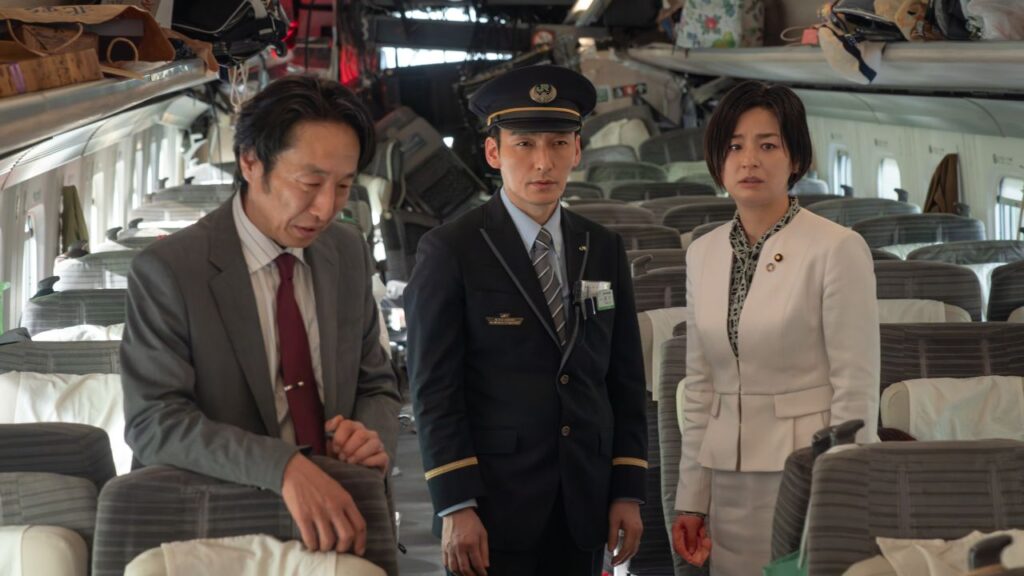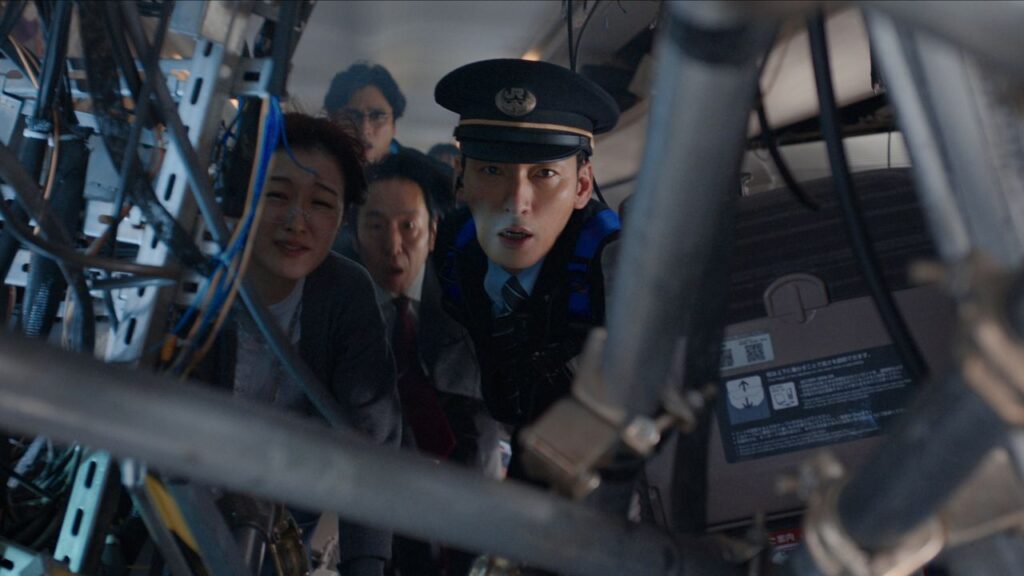The bullet train is synonymous with Japan. The Shinkansen is a technological marvel of incredible speed, safety, and precision. The railway’s legendary success is inseparable from its staff, who represent the best of Japanese efficiency and dedication. Japan also reigns as a disaster movie powerhouse. So it was only a matter of time before someone like Shinji Higuchi, of Shin Godzilla fame, put the genre on the train tracks. And thus, Bullet Train Explosion.
In Bullet Train Explosion, conductor Kazuya Takaichi (Tsuyoshi Kusanagi) worries that the younger generation takes for granted the Shinkansen and the values it represents. On a routine trip from Shin-Aomori to Tokyo, an anonymous caller tells the JR East headquarters that a bomb has been hidden on the Hayabusa 60 train. The rules are simple: if the Hayabusa 60 slows below 100 km/h or if the train reaches Tokyo station before the ¥100 billion ransom is paid, the bomb will detonate.
Takaichi and his crew’s immediate problem is finding and figuring out how to defuse the bomb. But the most dangerous thing on the train isn’t the incendiary device – it’s the human element. As panic sets in, each passenger becomes a ticking time bomb in a compressed space. Everyone here has an axe to grind: there are moody teenagers, a celebrity influencer, a supposed killer, and Yuko Kagami (Machiko Ono), a disgraced politician who sees the bomb as the perfect PR opportunity.

Now, Japan is no stranger to terrorist attacks targeting its railways. In 1995, the infamous sarin gas attacks occurred when the Aum Shinrikyo cult released poisonous gas in Tokyo’s subway stations. The traumatic event scarred the Japanese collective psyche, shattering their country’s track record of impeccable safety. This is also why you’ll be hard pressed to find rubbish bins around Tokyo. People are understandably leery of potentially lethal, unidentified objects hidden in public spaces.
Bullet Train Explosion taps into this deep-seated cultural fear, especially since the Shinkansen is such an integral part of daily life there. And trains are ideal settings for disaster movies. Trains present interesting contradictions. A train is an enclosed environment, yet expansive enough for any action to unfold in multiple carriages. They also offer the exhilaration of perpetual motion, yet unlike a bus or airplane, they cannot deviate from their route. For the Hayabusa 60, the end of the line is the literal terminus for all aboard.

You’ll be forgiven for assuming that Bullet Train Explosion was inspired by Speed (1994). After all, the premise is near-identical. But film lineages can be tricky, circular things. Speed was actually inspired by Junya Sato’s 1975 action thriller, The Bullet Train. Meanwhile, Shinji Higuchi’s 2025 film is a direct descendant of Sato’s. As a sequel, Bullet Train Explosion follows up on the fallout of events in the first film, showing how the weight of inherited family trauma can pass down the line.
Higuchi’s sequel is very much a film of modern times. The bomber demands that the ransom be paid by the nation. The passengers and crew know their government will not negotiate with terrorists, so some technologically savvy passengers start an online platform to raise donations, and everyone on board uses social media to broadcast their plight. It’s a strikingly neoliberal strategy for survival. The passengers embrace the neoliberal ethos that nobody can help you but yourself.

One key difference from the original film is that Higuchi was reportedly allowed to film on Shinkansen units and utilise the railway facilities. This collaboration with the East JR Company made all the difference because it gave Higuchi’s film a realism that could never be achieved with CGI or train models. And Bullet Train Explosion pays it back by being an earnest and emotional love letter to the Shinkansen and the selfless staff who dedicate their lives to the railway.
For at the end of the day, it’s the crew of the Hayabusa 60 who are the true heart and hands of the railway. Takaichi and his team embody near superhuman precision and discipline that speaks highly of their rigorous training while maintaining their humanity and compassion in the face of overwhelming danger. Bullet Train Explosion is both a textbook example of crisis management done right and also the best advertising that the JR line could ask to have.









Follow Us